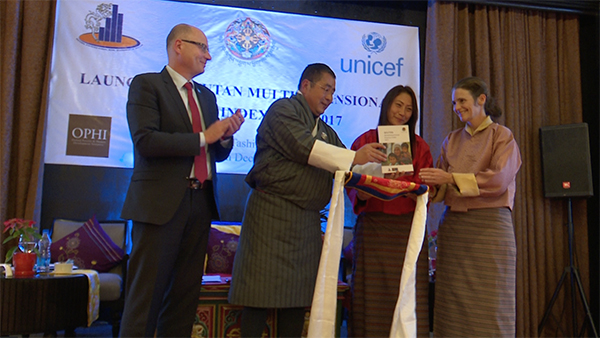 Bhutan’s multidimensional poverty rate has come down to 5.8 per cent from 12.7 per cent in 2012, according to the Bhutan Multidimensional Poverty Index 2017. The National Statistics Bureau (NSB) released the report yesterday.
Bhutan’s multidimensional poverty rate has come down to 5.8 per cent from 12.7 per cent in 2012, according to the Bhutan Multidimensional Poverty Index 2017. The National Statistics Bureau (NSB) released the report yesterday.
But what is multidimensional poverty? Poverty is usually defined as a lack of money, but there is more to it. In other words, poverty means much more than lack of income.
A poor person can suffer from multi disadvantages at the same time. For instance, they may have poor health and malnutrition, a lack of clean water or electricity, poor quality of work or little schooling.
Multidimensional poverty measurement is a different approach to measuring poverty in addition to conventional income poverty methods. Focusing on the income factor alone doesn’t capture the true reality of poverty. Multidimensional poverty measures help in coming up with a more comprehensive picture of poverty.
Besides income, Bhutan’s Multidimensional Poverty Index or MPI monitors 13 other indicators under three dimensions- health, education and standard of living.
The health dimension has two indicators- Child Mortality and Food Security. Under the education dimension too, there are two indicators- School Attendance and Schooling, while nine indicators are used within the standard of living dimension. They are Cooking Fuel, Sanitation, Electricity, Water, Road, Housing, Asset, Land and Livestock.
A person is considered poor if they are deprived in at least four out of the 13 indicators. NSB says there were significant reductions in each indicator, showing an improved access to health, education and sanitation among others.
The report states that largest contributors to national poverty are deprivations in years of education with 32 percent, followed by child mortality with 23 percent.
Age-group wise, multidimensional poverty is highest in children under the age of nine.
The National MPI Report complements Bhutan’s income poverty measure by providing an in-depth picture of poverty, which helps the government in developing and implementing efficient public policies. “It shows how people are poor, so you can direct resources to those areas, and the very good news that we found today is Bhutan has reduced its MPI since 2012 by roughly half, which is very strong pattern of reduction in this level of very serious poverty,” Sabina Alkire, the Director of Oxford Poverty Human Development Initiative said.
NSB says the MPI Report 2017 is based on a sample survey and the results carry a margin of error.









